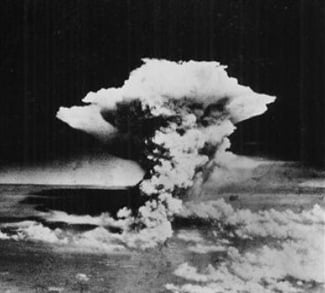Self-Assured Destruction, The Climate Impacts of Nuclear War. Mass Starvation, Ozone Depletion

The greatest threat to humanity is nuclear war.
While public opinion is largely misinformed, US “decision-makers” including president Trump are also unaware and misinformed as to the consequences of their actions. Multi-billion dollar bonanza for the Military-Industrial Complex: “Scientific opinion” on contract to Pentagon presents tactical nuclear as “peace-making” bombs.
Global Research will be featuring on a regular basis a number of articles and reports on the dangers of nuclear war focussing on the scientific, policy and military dimensions.
Forward this article.
The objective is to build a cohesive and Worldwide campaign against nuclear weapons.
Michel Chossudovsky, Global Research, April 21, 2017
A nuclear war between Russia and the United States, even after the arsenal reductions planned under New START, could produce a nuclear winter. Hence, an attack by either side could be suicidal, resulting in self-assured destruction.
Even a “small” nuclear war between India and Pakistan, with each country detonating 50 Hiroshima-size atom bombs—only about 0.03 percent of the global nuclear arsenal’s explosive power—as air bursts in urban areas, could produce so much smoke that temperatures would fall below those of the Little Ice Age of the fourteenth to nineteenth centuries, shortening the growing season around the world and threatening the global food supply.
Furthermore, there would be massive ozone depletion, allowing more ultraviolet radiation to reach Earth’s surface. Recent studies predict that agricultural production in parts of the United States and China would decline by about 20 percent for four years, and by 10 percent for a decade.
The environmental threat posed by even a small number of nuclear weapons must be considered in nuclear policy deliberations. Military planners now treat the environmental effects as collateral damage, and treaties currently consider only the number of weapons needed to assure destruction of opposing forces. Instead, treaties must call for further reductions in weapons so that the collateral effects do not threaten the continued survival of the bulk of humanity. Proliferation cannot be treated as a regional problem.
A regional conflict has the potential to cause mass starvation worldwide through environmental effects.
A meteorologist, Alan Robock is associate director of the Center for Environmental Prediction at Rutgers University, where he is a professor in the Department of Environmental Sciences. His expertise is in the environmental effects of aerosols in the atmosphere–whether from volcanoes, pollution, geoengineering, or nuclear weapons. He currently serves on the editorial board of Reviews of Geophysics.
Owen Brian Toon is a professor in the Department of Atmospheric and Oceanic Sciences, and a research associate at the Laboratory for Atmospheric and Space Physics, at the University of Colorado, Boulder. He leads a research group that studies aerosols and cloud physics, and investigates climate and atmospheric chemistry on Earth and other planetary bodies.

